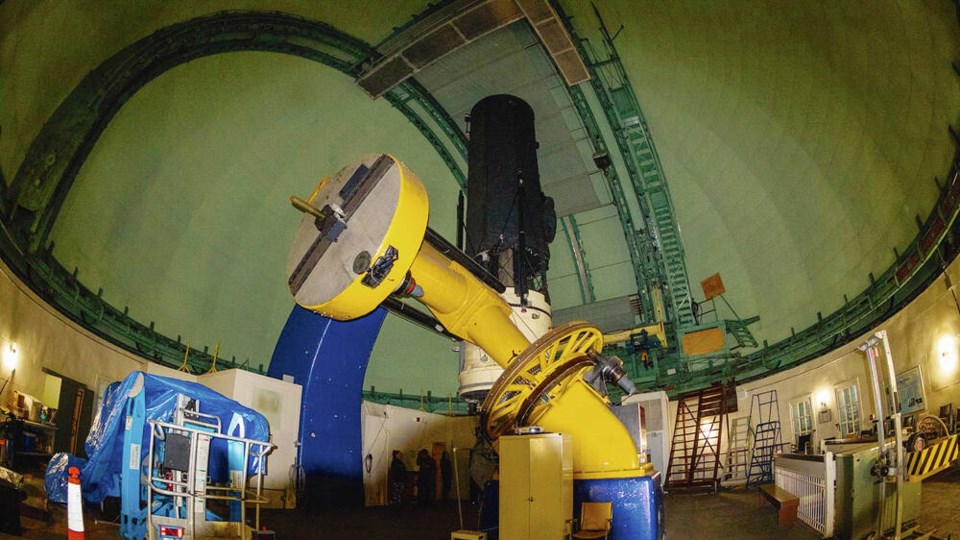The road leading to the Centre of the Universe has been repaved and reopened, making the journey to the Dominion Astrophysical Observatory’s visitor and education centre much smoother.
(The “Centre of the Universe” moniker is an inside joke, as astronomers agree there is no physical central point to the universe — any point can be the centre from an observational point of view.)
Closed for two years over the pandemic, the 2.2-kilometre road on Little Saanich Mountain is now open to vehicles during regular working hours. After hours, the road and trails on the property are open to pedestrians and cyclists, who train by pedalling up the average six per cent grade route.
Ben Dorman, chair of the Friends of the Dominion Astrophysical Observatory, a non-profit that hosts educational programs at the centre, said the reopening “happily coincides” with the restart of school tours, where busloads of children head up the hill to visit the white-domed observatory, a national historic landmark that houses the 1.8-metre Plaskett Telescope.
“It is always something to see their little eyes light up at the sight of the telescope,” said Dorman, noting that with a 72-inch mirror that weighed 5,000 pounds, it was the largest operational telescope in the world when the observatory opened in June 1918. “It’s pretty darn big and a lot more interesting than a lesson at school.”
In its early years, the observatory contributed to a number of major scientific discoveries, he said, with the design copied around the world.
The grounds also house the National Research Council Canada’s Herzberg Astronomy and Astrophysics Research Centre, the leading centre for astronomy and astrophysics in Canada. Workers with the National Research Council build and test instruments at the site.
Funding from the Victoria Foundation’s Community Grants Program, which helps subsidize field trips to the observatory, allowed the Friends of the Dominion Astrophysical Observatory to provide almost 90 school tours involving more than 4,300 students last year to learn about the universe.
In-person school visitors are given tours of the dome and the Plaskett Telescope, presentations on B.C. school curriculum topics, planetarium shows, gallery tours, astronomy demonstrations and hands-on activities.
The Friends of the Dominion Astrophysical Observatory also hosts Star Parties, public events that run 7 to 11 p.m. every other Saturday over the summer months.
Each session promotes scientific literacy with different speakers and topics, such as light pollution and its impact on ecosystems.
During the Star Parties, participants can peer at the stars through a number of the Royal Astronomical Society of Canada’s telescopes, set up outdoors on the interpretive centre’s deck and in the parking lot between the centre and the dome, weather permitting.
The programs are also now more accessible to those who can’t be there in person, with YouTube videos and live streaming of some events.
“We offer a passport to science for different groups, such as schools, clubs, retirement homes and Scouts,” said Dorman.
Contributions to Friends of the Dominion Astrophysical Observatory are tax deductible. Every donation of $100 can support 50 students in one school tour, the group says.
For more information, go to centreoftheuniverse.org.
>>> To comment on this article, write a letter to the editor: [email protected]



